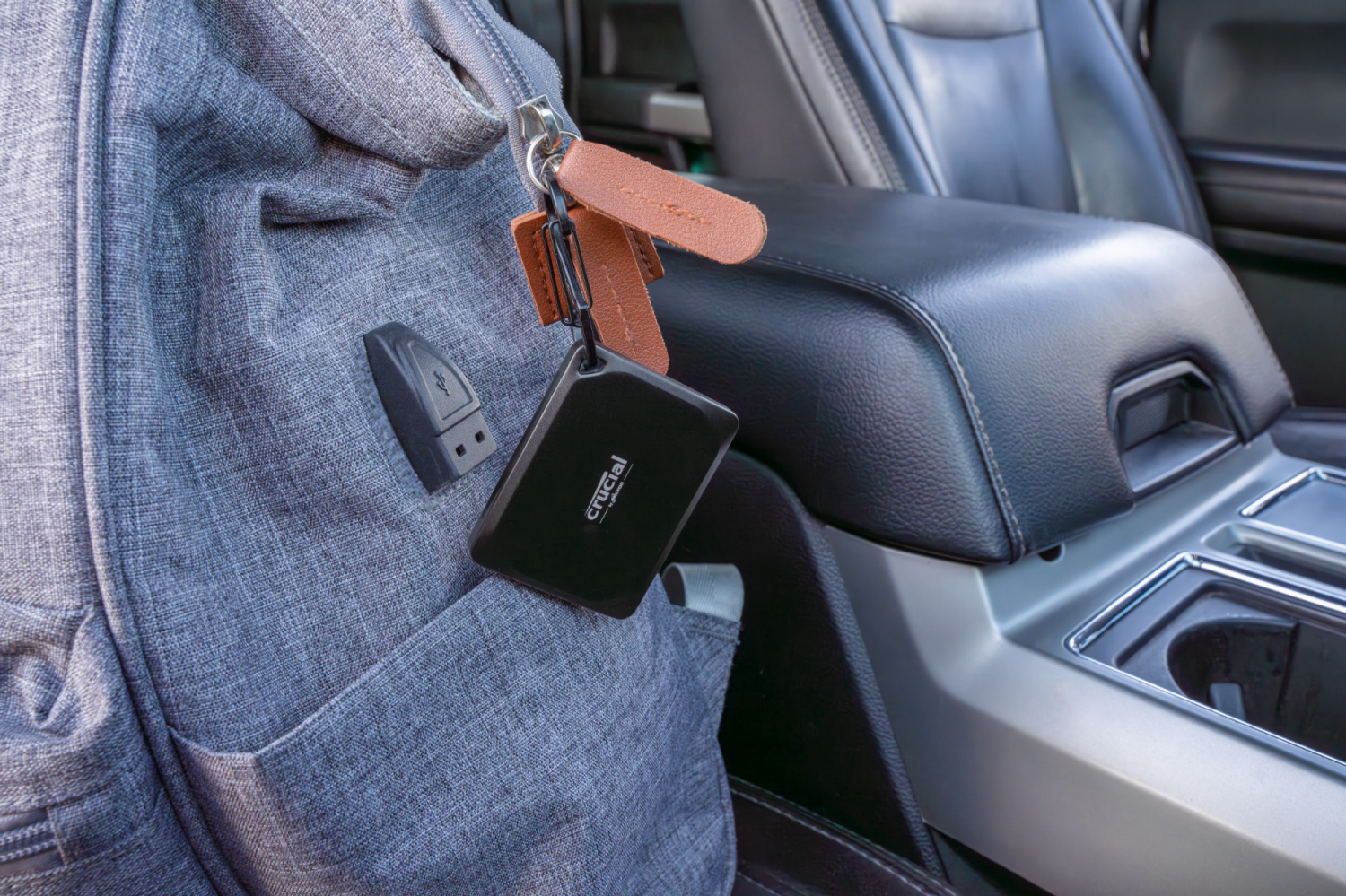How to level up your next creative project with a portable SSD
Into the wilds

As a writer and occasional photographer, I don’t like to be anchored in one place when it comes to my creative work. Sure, most of the articles I produce for TechRadar are typed out sat at my desktop PC in my office - but for my own personal projects, I’m a fan of taking my laptop and camera out into the world to seek inspiration.
The problem with this, especially when it comes to outdoor camerawork, is that you often don’t have the benefit of an internet connection. Sure, the modern convenience of cloud storage is great, but it’s exactly zero use when I’m walking through the woods looking for good photo opportunities.
This is where a portable SSD comes in handy. If you’ve got one - like the excellent Crucial X10 Pro - you can quickly and easily back up your files wherever you are. With straightforward USB-C connectivity, I can connect it directly to my Android phone or even my camera with minimal bother.
Taking your work with you
Backing up your work as a local copy is always a good idea - I can’t stress this enough. When I was at university, I had roughly 140,000 words of notes and concept plans for my creative writing projects all saved in Microsoft OneNote, safe and sound (or so I thought).
One account glitch later, and my work was irreplaceably gone; not even Microsoft support could help me. I swore off cloud storage for a while after that, and although I’ve since returned to it for convenience’s sake, I’ve learned my lesson and now treat it as just another backup - not a replacement for physical storage.
The other key benefit of being able to back up my creative work wherever I go (and know that it’s safe and secure thanks to the password and encryption features offered by many modern SSDs) is that I can take it wherever I go - with a 2TB drive compared to the 512GB of storage my laptop offers, I can make sure all my documents and photos are at my fingertips at any time.

Many portable SSDs - including the X10 Pro I mentioned above - come with extra-durable designs that are dust- and water-resistant, meaning that if I drop it when I’m up a hill somewhere, it’s not going to break.
Sign up for breaking news, reviews, opinion, top tech deals, and more.
The same can’t be said for my laptop, so it gives me extra peace of mind knowing that even if I do take a tumble and damage some of my hardware, all my work will at least be safe!
Storage technology has come a huge way recently as well. Not only does that mean that portable hard drives are now more compact and easier to carry around, but they can carry huge amounts of data. Portable SSDs with high capacities such as 512GB, 1TB or more can effectively store every file you need. This is especially important for creatives who work with large files, such as photographers and video editors. By investing in a portable SSD for your next creative project, you can carry around all your files - and even applications - that you need in your pocket or backpack.
Solid state decisions
Thankfully, as portable SSD capacities have evolved, so too has the tech that allows you to access your files as quickly as possible. Modern SSDs (which stands for Solid State Drives) far outperform even the best hard drives you can buy right now.
This is because, as the name suggests, SSDs have no moving parts, and use memory chips to access data. Hard drives, meanwhile, have moving parts, including a mechanical disk that spins, while a read/write arm is used to access the data on the disk - not a million miles from how a record player accesses music on a vinyl disk.
As the hard drive has to wait for the disk to spin to read the right part of it, there can be a delay, and while you can get hard drives with high speeds (measured in RPM - revolutions per minute), even the very fastest can’t compete with the slowest SSDs, who do not have to wait for any disks to spin - they just access data directly from the memory chips.

Another big technological leap came with the way you can connect the external SSD to your PC or laptop. For a long while USB 2.0 was the most popular, but thanks to USB 3.0, as well as the latest USB-C interface, you can now transfer your files to and from a modern SSD incredibly quickly.
This is great for creatives, as it allows you to move lots of large files from your laptop to an external SSD in a matter of seconds, so you’re spending less time waiting around, and more time doing the things you love. The speed of modern SSDs allows you to even install applications on them, and run the apps directly from the portable SSD, rather than the drive in your laptop. This makes portable SSDs a handy and affordable way to upgrade the storage of your devices.
All the major names in portable SSDs, such as Crucial, WD and Samsung, all have super-fast devices that make use of the latest USB connectivity technology. For more help and advice for people looking to buy one, check out our hand-picked list of the best portable SSDs in 2023.
Below, I’ve also written a handy FAQ to answer the most common questions people have about portable SSDs.
FAQ
How does a portable SSD assist creatives and professionals?
A portable SSD is a great tool for creatives and professionals as it allows you to quickly and easily add extra storage space to your laptop, PC or Mac. They are able to hold large amounts of data, so even if you work with raw video footage, complex musical arrangements or high-definition photographs, you’re able to store everything safely and securely on a portable SSD.
What are read/write speeds?
When looking to buy a portable SSD, you’ll probably notice that read/write speeds are mentioned. These are two different maximum speeds, usually measured in MB/s (megabytes per second).
The read speed refers to how fast the SSD can access (or ‘read’) data stored on it. Conversely, write speeds refer to how fast an SSD can move (or ‘write’) data to its available storage.
Why do read/write speeds matter?
Read/write speeds are incredibly important as they let you know how fast an SSD (or hard drive) is capable of. Bear in mind that read/write speeds provided by manufacturers are potential highest speeds - in reality the drive may not reach those speeds often.
It’s still a good indication of how fast a drive is, however. For hard drives, their read/write speeds are around 80 MB/s and 160 MB/s, respectively. For standard SATA SSDs, this increases to a maximum of 200MB/s and 550 MB/s, respectively. There is also a newer breed of SSD known as NVMe, and these can reach read/write speeds of up to 7,300MB/s. So, you can see just how much faster the latest SSDs can be.

Christian is TechRadar’s UK-based Computing Editor. He came to us from Maximum PC magazine, where he fell in love with computer hardware and building PCs. He was a regular fixture amongst our freelance review team before making the jump to TechRadar, and can usually be found drooling over the latest high-end graphics card or gaming laptop before looking at his bank account balance and crying.
Christian is a keen campaigner for LGBTQ+ rights and the owner of a charming rescue dog named Lucy, having adopted her after he beat cancer in 2021. She keeps him fit and healthy through a combination of face-licking and long walks, and only occasionally barks at him to demand treats when he’s trying to work from home.